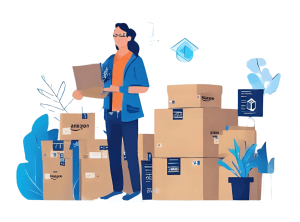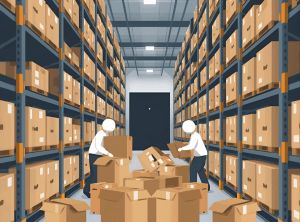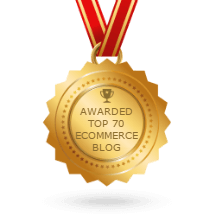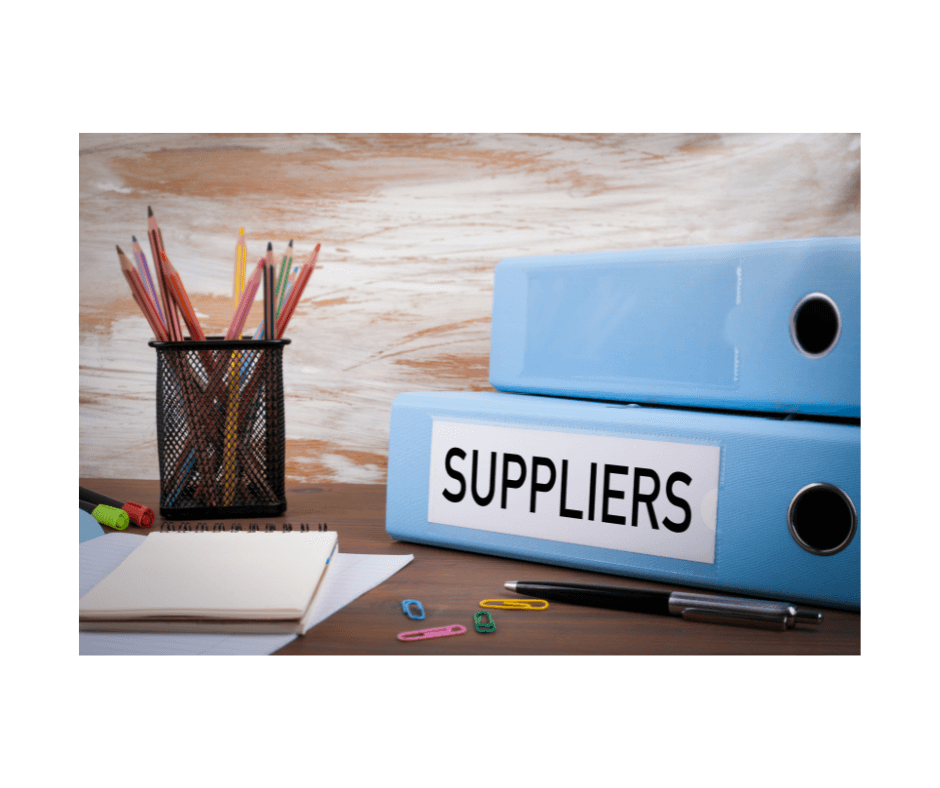
Is 2025 a year of opportunity? Only time will tell. Finding the best suppliers for Amazon sellers and sourcing products for Amazon FBA efficiently will play a pivotal role in the seller economy this year. For your Amazon FBA sourcing tips, check out this guide on suppliers, products, and negotiations.
There’s no point in selling on Amazon FBA if you’re not willing to work on finding reliable suppliers for Amazon products. After all, your choice will affect your product range, availability, and margins. It might even shape your reputation too. This list says it best:
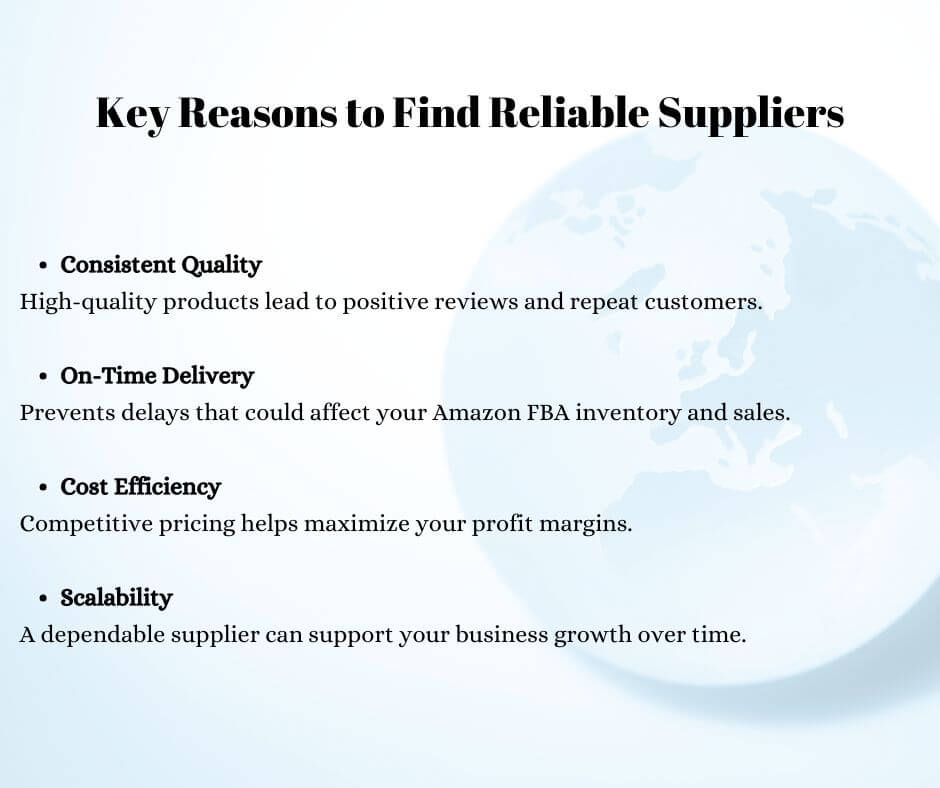
This applies to anyone who sells on Amazon (e.g., wholesaler, reseller, drop-shipper, private labelThis is what you call products manufactu… More). Odds are you’re looking for a few Amazon FBA sourcing tips too. So, let’s find out how to source products for Amazon, negotiate a good price, and work with only the best suppliers for Amazon sellers.
Guide to Sourcing on Amazon FBA
Keep Up With Amazon Guidelines
Before you start your research, it’s worth watching this tutorial on how to source products for Amazon. Remember: the onus is on you to ensure compliance, not your supplier. So, be sure to keep up with the rules. Especially if you work with wholesalers and drop-shippers.
Define Your Sourcing Goals
Another top priority is to figure out how to source products for Amazon so that it won’t clash with your business model. Here are some of your options for sourcing products for Amazon FBA, based on a few key factors and constraints:
- Product Type. You could source a generic product and sell it ‘as is’, revamp it to create a Private LabelThis is what you call products manufactu… More item, or resell a wholesale item, for instance.
- Budget. Factor in the location of the FBA warehouse that will store your product. Also consider tariffs, customs duties, insurance, QA, labeling, prepping, and storage costs.
- Order Volume. You may want to start with smaller quantities to test demand, focusing on in-demand items for larger orders, or you may opt for minimum order quantities on subscription orders, for example.
- Geographic Preference. Consider local vs. international suppliers for Amazon products, and how this would affect lead times, quality, and the cost of shipping from the supplier and all the way to the target customer.
Pro Tip: For wholesale sourcing, focus on products with steady demand and minimal competition on Amazon.
Find Reliable Suppliers
If you’re wondering where to find suppliers for Amazon, you’re in good company. All sellers do at some point. So, when it comes to sourcing products for Amazon FBA, there’s no shortage of ads, posts, and advice online. Some companies can even provide an Amazon supplier directory.
We shared a few directories in our post titled “Sourcing Amazon Products”. But you may also be able to find supplier names on the Seller Forums, in sourcing and scanning software tools, or even on subreddits.
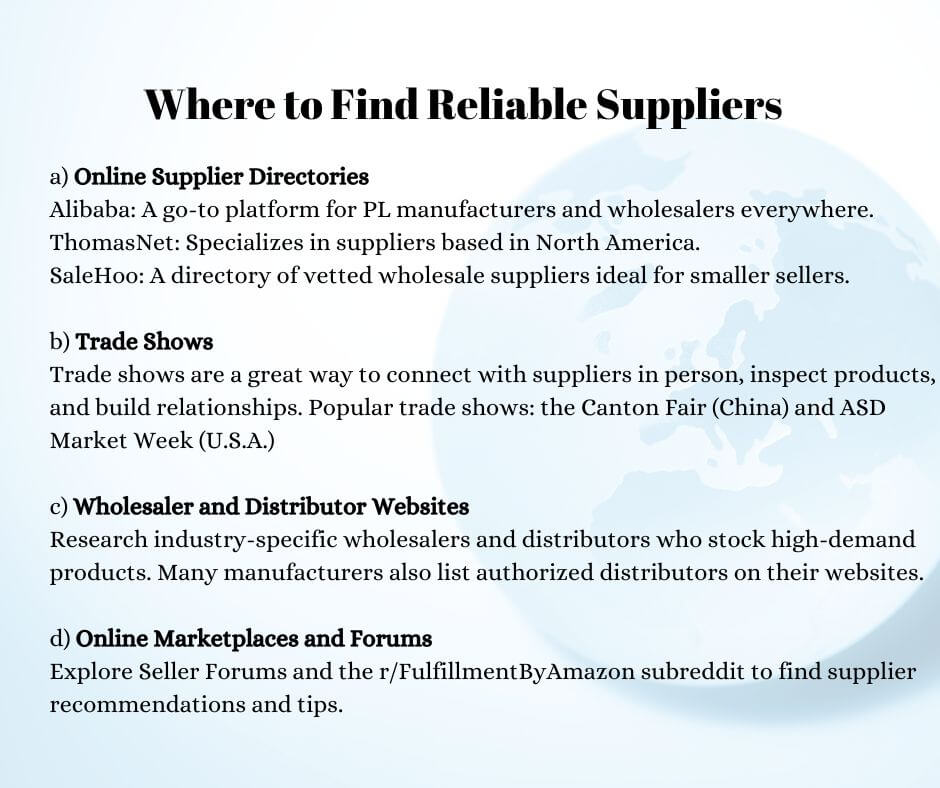
Evaluate Potential Suppliers
Now that you’ve found a directory of Amazon FBA wholesale suppliers and identified a few potential matches, it’s time to compare and assess them. Here are some of the criteria you can use to sift out the best suppliers for Amazon sellers like yourself:
- Product Samples. Always request samples as soon as you connect to a supplier and exchange pleasantries, so that you can assess product quality before you commit to buying.
- Request Customizations. Check that the samples are available in the style, size, and colorway of your choice, with the packaging graphics and customizations you want and Amazon requires of you.
- Minimum Order Quantities (MOQs). Ensure their MOQs align with your budget and testing needs.
- Multiple Quotes. Procure several volume-based quotes from each candidate and ascertain if they’re willing to negotiate based on your projected sales volume.
- Production Capacity. Double-check lead times and delivery expectations, making sure that they have the ability to scale if your demand increases.
- Readiness in Replies. To maximize the chances of finding suppliers you can successfully work with on a long-term basis, keep a record of their replies and how promptly and clearly they respond to your queries.
- Rave reviews. Go over their reviews and ask them to clarify any aspects you find troubling.
- Communication Issues. Look into ways to get over any language barriers and avoid mishaps (e.g., AI translation tools, interpreters, trade specialists).
- Compliance. Check that their product certifications (COA, GMP, CE), hazard documents (SDS), badges, tags, and labels match Amazon’s requirements. You should be especially cautious in regulated categories like toys and electronics.
- Ask About Audits. Suppliers often use audit reports as proof that their operations comply with safety and human rights laws, even though inspections are announced in advance, confined, and limited in their scope. For some types of products, an audit simply can’t ascertain compliance for all their ingredients and sourcing practices. But it’s a starting point and your only reference until regulation improves.
Pro Tip: Use tools like Profit Bandit to analyze potential products and ensure they align with Amazon’s standards.
Negotiate with Suppliers
All this work will have been for nothing if you can’t bring the supplier’s price down to a figure you can work with as an FBA seller. Here are a few tips for supplier negotiation on Amazon to secure the best deals:
- Request Discounts. Ask for volume discounts if you plan to scale orders, and give the supplier whatever reassurance you can that you’ll be buying more soon.
- Clarify Payment Terms. Many suppliers offer better terms for bulk orders or long-term contracts, but make sure you don’t get locked into an agreement you can’t honor.
- Protect Your Funds. Always use secure payment methods like trade assurance (Alibaba) or escrow services on top of any compensation your bank might offer for disputed transactions.
- Include Clear Expectations. Outline quality standards, lead times, and refund policies in your agreement, protecting any private labelThis is what you call products manufactu… More orders with an exclusivity clause.
- Be Mindful of Business Customs. In some cultures, not haggling can be seen as rude, but there are tradespeople who can just as well feel offended if your offer is too low.
A Deal is a Deal. Walking away from a transaction after you’ve already agreed to it is not only callous, but also potentially damaging. Most e-commerce platforms allow suppliers to rate their customers, so you’re not doing yourself any favors by not keeping your end of the bargain.
Source Locally vs. Internationally
The distance between you and your supplier not only adds to the carbon footprint, but also to the complexity of your business model, which affects logistics costs. So, there’s every reason to think hard before you choose between local vs international suppliers for Amazon. But there are pros and cons to both options:
- Local Suppliers. With faster deliveries, quicker communication, and fewer compliance challenges, this option is ideal for sellers who target time-poor customers (e.g., Amazon Prime members).
- International Suppliers. When you cast a wider net, you usually get lower original costs and access a broader range of products. But there’s usually a trade-off, such as longer shipping times and dealing with customs.
Pro Tip: Start with local suppliers to connect faster with suppliers and lower your risk, but start looking for ways to expand globally as your business grows.
Avoid Common Pitfalls in Supplier Sourcing
You’ve made it this far through the post and checked out all the links and informational material. So, you’ve already overcome some of the most common mistakes sellers make in dealing with Amazon FBA wholesale suppliers, manufacturers, and private labelThis is what you call products manufactu… More producers. But just to be safe make sure you don’t:
- Skip Research. If you don’t vet your suppliers from the get-go, you can soon be faced with quality issues and unreliable deliveries.
- Overlook Compliance. Ensure your supplier adheres to Amazon’s guidelines and safety standards for your category. Otherwise, you risk suspensions and lifetime bans.
- Ignore Hidden Costs. Factor in duties, taxes, and shipping fees when calculating profitability. Costs can quickly spiral if your assigned FBA warehouse is remote, your shipments get stuck in customs, or you miss a sales event or an FBA holiday deadline.
- Lawyer Up. It’s best to have a legal professional on standby and willing to represent you if safety or compliance issues arise, because you’re responsible for them if you sell on Amazon, not the supplier.
Build Long-Term Relationships
There’s no chance of long-term success as an Amazon seller if you don’t establish trust and maintain open communication with your suppliers. Amazon expects to see evidence that your suppliers are active, reliable, and willing to vouch for you, so:
- Stay in Touch. Check in often to discuss your orders, new product opportunities, changing shopping behaviors, buying trends, and challenges.
- Provide FeedbackA performance rating on a scale of 1 to … More. Share your thoughts on product quality and delivery to help suppliers improve, and let them know when Amazon flags up any issues with product quality or delivery.
- Offer Stability. Business thrives in stability, so assure your suppliers that you’re interested in long-term partnerships, worthy of any preferential pricing or priority service.
Finding reliable suppliers for any Amazon FBA business takes careful planning, research, and analysis. But thanks to the Amazon FBA sourcing tips in this guide, you already have all the tools you need to create a sustainable sourcing strategy that supports your growth on Amazon.

Melanie takes an active interest in all things Amazon. She keeps an eye on the latest developments and keeps Amazon sellers up to speed.

